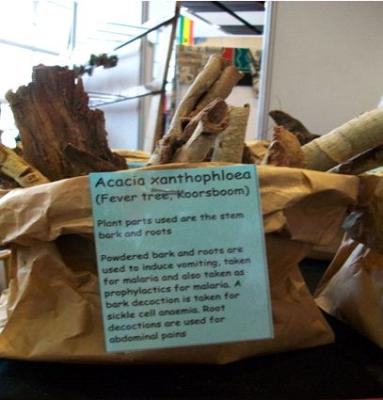Scientific name
Acacia xanthophloe
Order / Family
Fabaceae
Local Names
Boran (Hwacho dima); Kamba (Kimweya, Musewa, Mwea, Mweya); Kikuyu (Murera); Kipsigis (Ochmnyaliliet); Luo (Kuth ataro); Maasai (Olerai); Marakwet (Reno); Meru (Murera); Taveta (Mwelela);
Introduction
General Distribution:
The tree is spread from Kenya south to South Africa. It is often found in clusters where the water table is high, beside lakes or rivers, 600 - 2, 300 m, often on black cotton soils.
General Information about the Tree:
The bark extract was traditionally used for treatment of malaria. It is also a useful tree for protection of water courses and is good in pastures due to its light crown. The seeds and wood are susceptible to insect damage.
Biophysical Limits:
Altitude ranges from 600-2 100 m above sea level.
A. xanthophloea prefers sandy soils.
A. xanthophloea prefers sandy soils.
Propagation and Tree Management
Seedlings, wildings or direct sowing at site may be used to propagate it. This is one of the fastest-growing thorn-tree species in Africa. It can withstand lopping and if planted as an ornamental, trees should be planted in groups of up to 5 for the best effect. Though its root system is not aggressive, due to the large size of its taproot it should not be planted close to buildings.
Products:
- Fuel; it is a good source of firewood and charcoal.
- Timber; its wood is hard, heavy, pale brown with a red tinge. It can produce poles and posts. However, it should be seasoned before use, as it is liable to crack
- Medicine: Bark extracts are used for medicinal purposes; its roots and powdered bark of the stem can be used as an emetic and as a prophylactic against malaria
- Dead fence; dry branches are used as fence and is effective due to the thorns.
- Fodder: Foliage and pods provide food for livestock; young branches and leaves are eaten by elephants and the leaves and pods by giraffe and vervet monkeys.
- Apiculture: Trees produce good bee forage.
- Fuel: A. xanthophloea is planted as a source of firewood, although it produces a gum that leaves a thick, black, tarlike deposit when burnt.
Services:
- Soil improver; improves soil fertility by nitrogen fixation.
- Prevents soil erosion along rivers; it is good at riverbank stabilization.
- Ornamental; it is largely planted at the coast as an ornamental tree.
- Shade or shelter: A. xanthophloea provides nesting sites for birds.
- Nitrogen fixing: A. xanthophloeafixes atmospheric nitrogen.
- Boundary or barrier or support: Trees are planted as live fences
 |
| Fever tree products |
| © Bo Tengnas |
Pests and Diseases
The seeds and wood are highly susceptible to insect damage. The vervet monkeys often eat young pods making them not readily available from the natural stands.
Information Source Links
- ICRAF. 1992. A selection of useful trees and shrubs for Kenya: Notes on their identification, propagation and management for use by farming and pastoral communities. ICRAF.
- Albrecht J. ed. 1993. Tree seed hand book of Kenya. GTZ Forestry Seed Center Muguga, Nairobi, Kenya.
